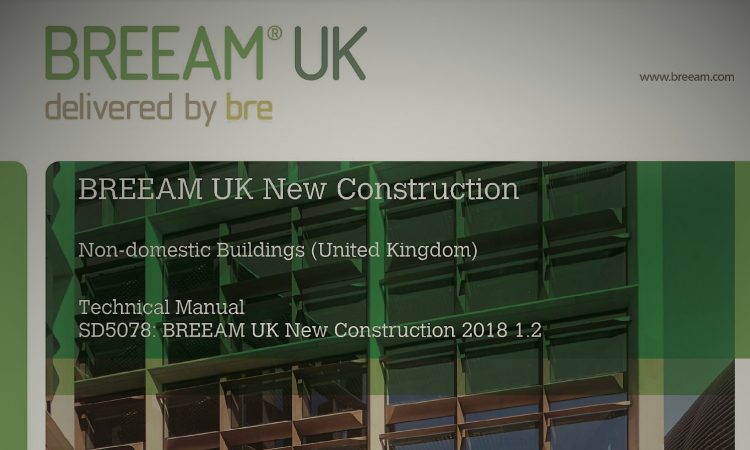Last week saw the launch of BREEAM (Building Research Establishment Environmental Assessment Method) UK New Construction 2018, which will act to replace the 2014 guidance of the same name with additional opportunities for BREEAM air quality credits. Registrations for the 2014 scheme will close towards the end of March, whilst those currently registered under the old scheme will still pursue credits in line with the 2014 guidance.
What is BREEAM?
BREEAM is the world’s leading sustainability assessment method for masterplanning projects, infrastructure and buildings. BREEAM measures the sustainable value of proposed schemes in a series of categories ranging from transport to waste, energy to ecology. Building Research Establishment (BRE) aim to frequently update their technical standards in order to ensure they reflect current best practice and technologies.
What’s Changed?
All current technical requirements of the standard are reviewed during the update process. The following technical areas were identified as the focus of this update:
- Transport;
- Health and Wellbeing;
- Materials; and,
- Unregulated and embodied Energy.
Updates to both the ‘Transport’ and ‘Health and Wellbeing’ categories are of relevance to air quality, with the Travel Plan category updated to further encourage low and emission-free modes of transport. This includes measures such as installation of electric vehicle charging points, promoting car sharing, contribution to the provision of public transport and provision of cycle storage and facilities.
BREEAM Air Quality Credits
The ‘Health and Wellbeing’ category Hea02 ‘indoor air quality’, now allows for a maximum of 4 BREEAM air quality credits, with the production of an Indoor Air Quality Plan (IAQP) allocated as a prerequisite. The ventilation credit has been updated to allow additional routes for compliance. The emissions from construction products credit has been updated to amend the emission standards against which building products must be compared. This will increase BREEAMs applicability and ease the process of identifying compliant products. Lastly, the total volatile organic compound (TVOC) concentration criteria against which post-construction monitoring must be compared has been increased from 300μg/m3 to 500μg/m3 over the 8-hour period. This change is likely to allow consistency with the criteria in the American WELL building standard, which has gained popularity in Europe over recent years.
Can Redmore Environmental Help You?
If your scheme is registered with BREEAM and you are looking to fulfil the requirements of the ‘Health and Wellbeing’ credits, please do not hesitate to get in touch with our specialist team today to find out how we can help you.



